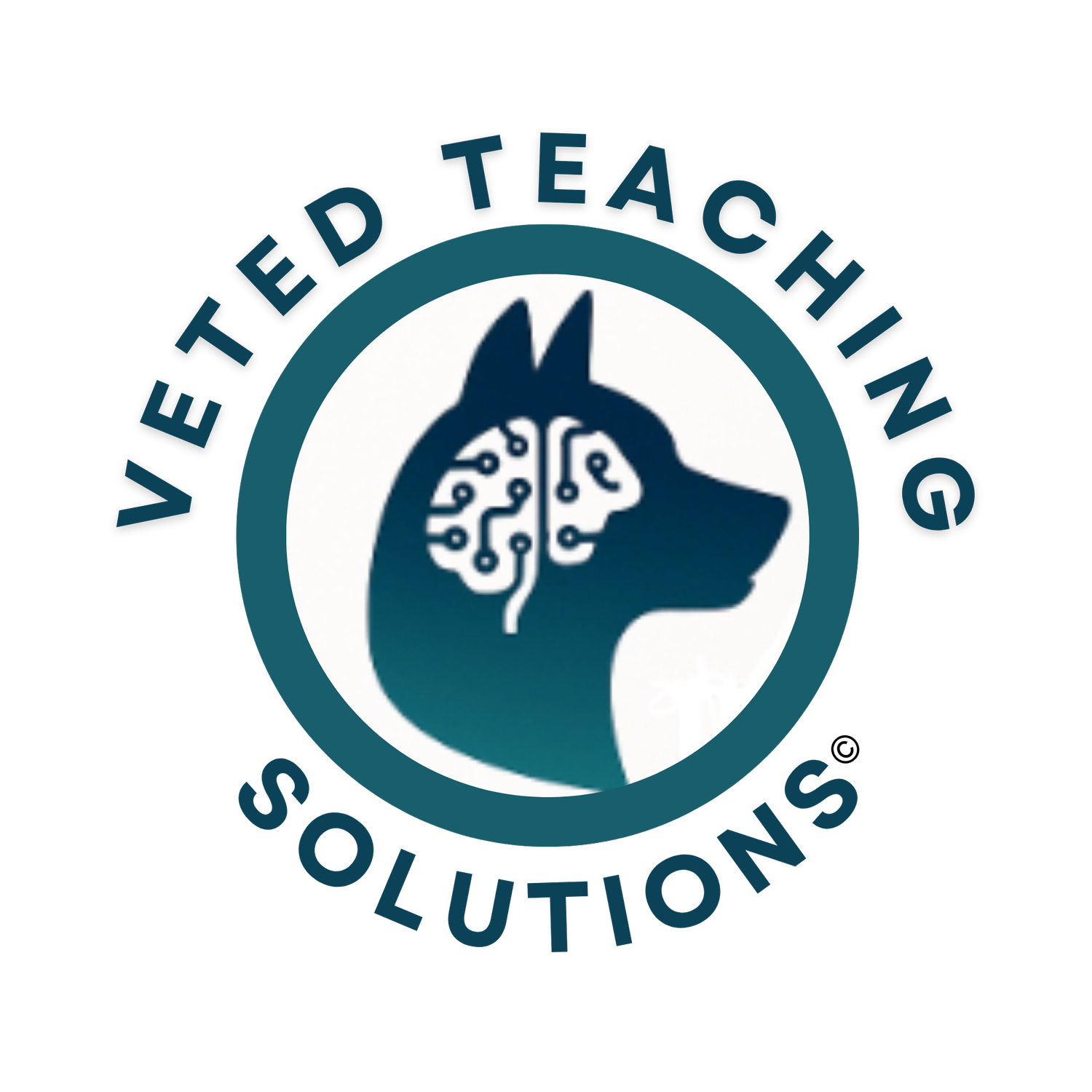AI in Veterinary Education: Why Human-Driven Design Still Matters
AI use is rapidly expanding in veterinary education — from generating case scenarios to supporting assessment design. Now is the time for collaboration between educators, veterinary specialists, and instructional designers to establish clear, thoughtful guidelines for how AI can best support teaching and learning. With a shared approach, we can ensure AI strengthens educational quality, drives innovation, and remains grounded in real-world clinical expertise.
The truth is simple: AI isn’t the instructional designer. It’s just a tool.
Its impact depends entirely on the humans guiding it — their expertise, their decisions, and their commitment to evidence-based teaching.
AI Is Only as Good as the People Programming It
The myth that AI is “plug and play” has led to a flood of generic learning materials. While AI can generate content quickly, it doesn’t inherently understand how veterinary students learn, how curricula scaffold, or how to translate diagnostic reasoning into a teachable skill.
That’s where human instructional designers — supported by veterinary specialists — are essential. They bring expertise in:
User-Centered Design (UCD): Meeting learners where they are and structuring content to match their progression
Learning Science: Applying proven strategies that improve knowledge retention, transfer, and confidence
Data Literacy: Interpreting learner performance and adapting instruction for better outcomes
AI can produce output. But only trained humans, with deep domain knowledge, can truly design.
Our Approach: AI as a Partner, Not a Replacement
At V.E.T.S., we’ve developed a proprietary AI engine, VetSpark, that supports our instructional designers — not replaces them. We pair AI efficiency with human expertise through:
Specialist-informed prompt development to ensure clinical accuracy from the start
Custom instructional frameworks aligned to CBVE competencies and EPA outcomes
Assessment mapping to connect learning objectives with measurable results
Iterative refinement using learner data to improve content continuously
This model allows us to design smarter, faster — but always with human judgment at the core.
The Ethical Side: Keeping Education Accurate and Accountable
Responsible AI use in veterinary education requires more than a quick human review. At V.E.T.S., our process includes:
Prompt Development with Specialists – Working directly with board-certified experts to inform AI input, ensuring precision in scope, terminology, and clinical accuracy.
Collaborative Design – Co-developing content alongside specialists and instructional designers so learning materials reflect both educational best practices and up-to-date veterinary knowledge.
Expert Review and Approval – All AI-assisted content is reviewed, edited, and signed off by subject matter experts before it reaches learners.
These safeguards protect educational integrity — ensuring every module we create is not only accurate but also pedagogically sound.
Why Design Still Wins Over Automation
AI alone doesn’t improve learning outcomes. People do. The most effective use of AI comes when it’s embedded within an intentional, evidence-based design process. That’s why we monitor learner interactions, track assessment performance, and feed those insights back into both our human-led and AI-supported workflows.
When instructional designers, veterinary specialists, and AI tools work together, the result is content that’s:
Clinically accurate
Engaging and interactive
Aligned to competencies and outcomes
Built to prepare graduates for real-world practice
Moving Forward Together
We believe the future of AI in veterinary education isn’t about replacing human expertise — it’s about amplifying it. By setting clear guidelines, fostering collaboration, and keeping educational integrity at the forefront, we can leverage AI’s strengths while avoiding its pitfalls.
If you’d like to explore how AI can support — not replace — veterinary teaching in your program, contact us.
